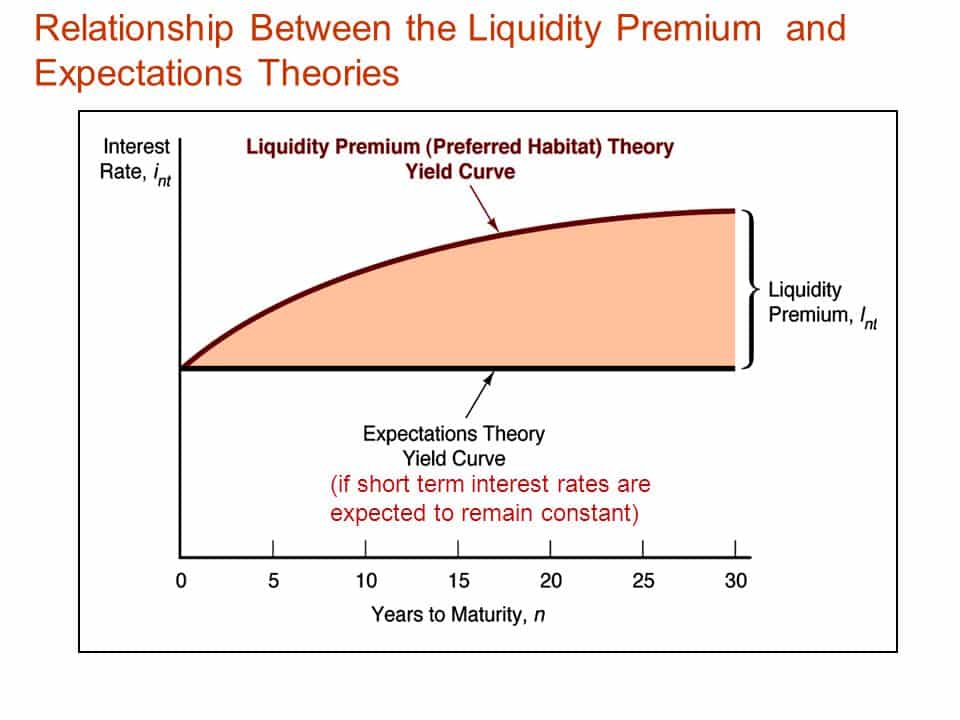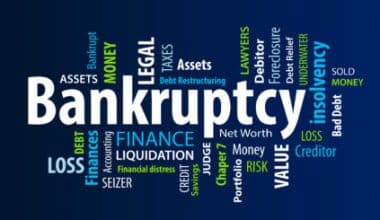In the financial industry, markup and margin are frequently used interchangeably but have very different meanings. Anyone involved in purchasing or selling products or services needs to understand the difference between the two and how each can be used to analyze financial transactions and make better financial decisions.
Let’s explore the differences between markup and margin: when to use each, and the formula to calculate each percentage.
Markup vs Margin
Markup and margin are two separate accounting concepts. They are often used to analyze financial transactions using the same inputs. However, they give different information.
Business leaders and financial analysts can better understand their company’s financial health and make better decisions about upcoming investments and growth strategies by understanding the distinctions between profit margin and markup.
Differences Between Markup and Margin
Margin and markup are both necessary measures to consider when pricing a product. Markup helps determine the selling price, while margin helps determine profitability. Also, markup is usually higher than margin because it is calculated as a percentage of cost, which is lower than revenue.
Markup vs Margin: Definitions
Markup is the difference between the selling price of a good or service and its cost. It can be expressed as a percentage above the cost. Markup is what you add to prices to make money, and it is entered as a decimal.
Many businesses set their prices by determining what it costs to provide goods and services, then marking up that amount by a percentage. To cover operating expenses and make a profit, the producer of a good or service adds a markup to the total cost.
A profitable business should understand markup, as it is one of the most important things because it is useful in establishing a good pricing strategy. The markup of a good or service must be enough to offset all business expenses and generate a profit.
Determining Markup Percentage
An appropriate markup percentage varies by industry. Most businesses can get a handle on it by talking to customers, analyzing competitors and industry norms, and relying on their experience.
Although no universal markup exists, indirect costs are relatively consistent within a given industry sector. Where indirect costs are generally low, markups tend to be low.
Examples of markup percentages by industry
- Retail grocers typically have markups of less than 15 percent.
- Food is generally marked up about 60 percent, and some beverages may be marked up as much as 500 percent.
- Jewelry is regularly marked up by 50 percent.
- Clothing generally, not just high-fashion clothing, is marked up from 100 percent to 300 percent.
Profit Margin
Profit margin is a financial ratio that measures the percentage of profit a company earns in relation to its revenue. It is the result of dividing the company’s net income by its net sales, or revenue.
A company’s profit margin is usually expressed as a percentage and measures how much of every dollar in sales or services a company keeps from its earnings. Additionally, it is calculated by dividing the profit by the revenue and multiplying by 100.
Every company has pricing strategies, and the profit margin will indicate how well those strategies work and how well it controls costs.
Determining the Profit Margin Percentage
Profit margin varies by industry as there are differences in competitive strategy and product mix. However, the business should maintain a healthy profit margin regardless of industry to ensure financial success.
A healthy profit margin will improve businesses’ ability to obtain loans. Also, investors looking at funding a particular startup may want to assess the profit margin of the potential product/service being developed. Investors often hone in on their respective profit margins while comparing two or more ventures to identify the better one.
There are three types of profit margin ratios:
- Gross profit margin: Gross profit margin is the most straightforward profitability metric. It defines profit as all income after accounting for the cost of goods sold.
- Operating profit margin: Operating profit margin is calculated by subtracting the operating expenses from gross profit and dividing the result by total revenue
- Net profit margin: Net profit margin is the most comprehensive ratio. It accounts for all of a company’s direct and indirect costs.
Examples of margin percentages by industry
- The transportation sector had a net margin of 4.4%.
- The retail industry had the lowest net margin at 2.9%
- In the construction industry, 1.5% to 2% profit margins are standard.
- The accounting and finance industries typically have higher profit margins, around 18-20%.
- The hotel/gaming sector had an average net profit margin of -28.56%
Markup vs Margin: Percentage
Markup vs margin percentage can be calculated as follows:
Profit Margin Percentage
Markup percentage is different from gross margin percentage, which is the difference between a product’s selling price and the cost as a percentage of revenue. The markup percentage is shown as a percentage of costs as opposed to a percentage of revenue. While the markup percentage is always more significant than the gross margin percentage as long as you charge more than what the product costs.
Markup Percentage
The markup percentage is calculated by dividing the difference between the selling price and the cost by the cost and multiplying by 100.
For example, if a product costs $10 and the selling price is $15, the markup percentage would be ($15 – $10) / $10 = 0.50 x 100 = 50%.
Markup vs Margin: Formula
Both terms use revenue and costs to calculate various aspects of a company’s financial performance. Although markup and margin use the same data and analyze the same transaction, they offer different perspectives on a company’s profitability.
To determine the relationship between markup and margin, you can use the following formulas:
- If you know the markup percentage, you can calculate the margin percentage using: Margin % = (1 – Markup %) * 100
- If you know the margin percentage, you can calculate the markup percentage using: Markup % = (Margin % / (1 – Margin %)) * 100
These formulas can also determine the markup required to achieve a specific margin. The formula for calculating markup vs margin percentage is as follows:
To calculate the markup percentage, you can use the formula:
Markup Percentage = (Selling Price – Cost Price) / Cost Price x 100%
To calculate the profit margin percentage, you can use the formula:
Profit Margin Percentage = ( Selling Price – Cost) / Selling Price x 100%
To convert from margin to markup, you can use the following formula:
Markup = Margin / (100 – Margin) * 100%
To convert from markup to margin, you can use the following formula:
Margin = Markup / (1 + Markup) * 100%
Markup vs Margin: Calculation
The markup price of goods is calculated as follows:
Markup = (Selling Price – Cost) / Cost * 100%
The margin is calculated as follows:
Margin = (Selling Price – Cost) / Selling Price * 100%
Markup vs Margin: Example
Markup vs Margin: Example 1
If the cost of a product is $7 and you want to earn a margin of $5 on it, the calculation of the markup percentage is:
$5 Margin ÷ $7 Cost = 71.4%
If we multiply the $7 cost by 1.714, we arrive at $12. The difference between the $12 price and the $7 cost is the desired margin of $5.
Markup vs Margin: Example 2
If the cost of a product is $50 and the selling price is $75, the markup percentage would be:
Markup Percentage = ($75 – $50) / $50 x 100%
Markup Percentage = 50%
When to Use Markup vs Margin
When deciding whether to use markup pricing, there are several factors you should consider, including the following:
- Costs associated with producing and selling the product
- Market demand for the product
- Industry standards and competitive edge
- When to Use Markup Pricing Strategy
Consider Using Markup Pricing When:
- Bulk pricing: Markup pricing is ideal for retailers with many products to price, as it saves time and effort compared to determining prices on a case-by-case basis.
- Determining retail price: Many businesses use markup pricing to determine their retail prices based on their desired profit margin and the highest market price.
- Establishing a pricing strategy as a new business: Startups can use markup pricing to begin and then adapt their pricing strategy to meet their specific needs.
- Uniform pricing: Markup pricing is typical among manufacturers, wholesalers, retailers, and service providers due to its simplicity and uniformity in pricing across the industry.
- Easy to formulate and implement: Markup pricing is simple and easy to implement. Hence, allows businesses to calculate markup from the cost price of products quickly and arrive at the selling price.
When deciding whether to use a margin pricing strategy, consider the following factors:
- Customer perceived value.
- Market conditions
- Cost structure.
- Profit margin goals
- Segmentation
Consider Using Margin Pricing When:
- Determine its pricing strategy based on its net profit margin, expressed as a percentage of sales.
- The business wants to evaluate its potential and also it’s capacity to generate profits.
- Determine pricing strategies for goods and services influenced by the cost of their products and the expected profit margin.
- Measure the profitability of a single product, as gross profit margin can be used for this purpose.
- Identifying business areas that need improvement, such as high unsold inventory, excess or underutilized employees and resources, or high rentals.
- Making quick decisions to support the growth and also the resilience of your company is necessary.
Is 100% Markup the Same as 50% Margin?
Markup is the percentage difference between the cost of a product or service and its selling price. The formula for calculating markup is:
((Price – Cost) / Cost) * 100 = % Markup
If a product costs you $4 and you sell it for $8, your markup is 100% because the selling price is double the cost.
Margin, on the other hand, represents the percentage of profit relative to the selling price. The formula for calculating the margin is:
((Price – Cost) / Price) * 100 = % Margin
Using the same example, if a product costs you $4 and you sell it for $8, your margin is 50% because the profit of $4 represents 50% of the selling price. Hence, a 100% markup results in a 50% margin, whereas a 50% markup would result in a 33.3% margin.
What Is the Difference Between 30% Margin and 30% Markup?
The difference between a 30% margin and a 30% markup lies in the variables used to calculate them.
Example: If an item costs $70 to produce and is sold for $100, the margin would be $30 or 30% ($30 divided by $100), and the markup would be $30 or 42.9% ($30 divided by $70).
What Is 20% Margin to Markup?
To convert from margin to markup, you can use the following formula:
Markup = Margin / (100 – Margin) * 100%
Converting 20% margin to markup, the result will be a markup percentage of 25%.
How Do You Calculate a 25% Markup?
Calculating a 25% markup involves finding the difference between the selling price and the cost as a percentage of the cost.
To calculate a 25% markup, follow the steps:
- Subtract the cost from the selling price to find the profit.
- Calculate the markup percentage by dividing the profit by the cost and multiplying by 100.
For example, if the cost of a product is $80, the selling price with a 25% markup would be:
Profit = Selling price – Cost = SP – $80
Markup percentage = (Profit / Cost) x 100 = 25%
Selling price = Cost + 25% of Cost = $80 + ($80 x 0.25) = $100
How Do You Convert 30% Markup to Margin?
To calculate the margin from markup, divide the markup rate by one plus the markup rate.
To convert from markup to margin, you can use the following formula:
Margin = Markup / (1 + Markup) * 100% = 30 / (1 + 30) x 100%
Is Doubling the Price a 100% Markup?
Yes, doubling the price of a product results in a 100% markup. This means the selling price is 100% higher than the cost price.
For example, if a product costs $50, and you double the price, the selling price will be $100.
What Is a 50% Markup Called?
A 50% markup is called “keystone” pricing in the retail industry. Keystone pricing is a pricing strategy in which a retailer doubles the wholesale price of a product to arrive at a retail price. Keystone pricing is a type of markup pricing, which is the practice of adding a percentage amount to the cost of goods to arrive at a selling price.
Related Articles
- REVENUE MODEL: Definition, Types, and Examples
- Cost-plus Pricing Strategies: Formula and Examples
- TRADING ON MARGIN: What It Means and Examples
- WHAT IS VARIANCE: Definition, Formula, and How To Calculate It.






